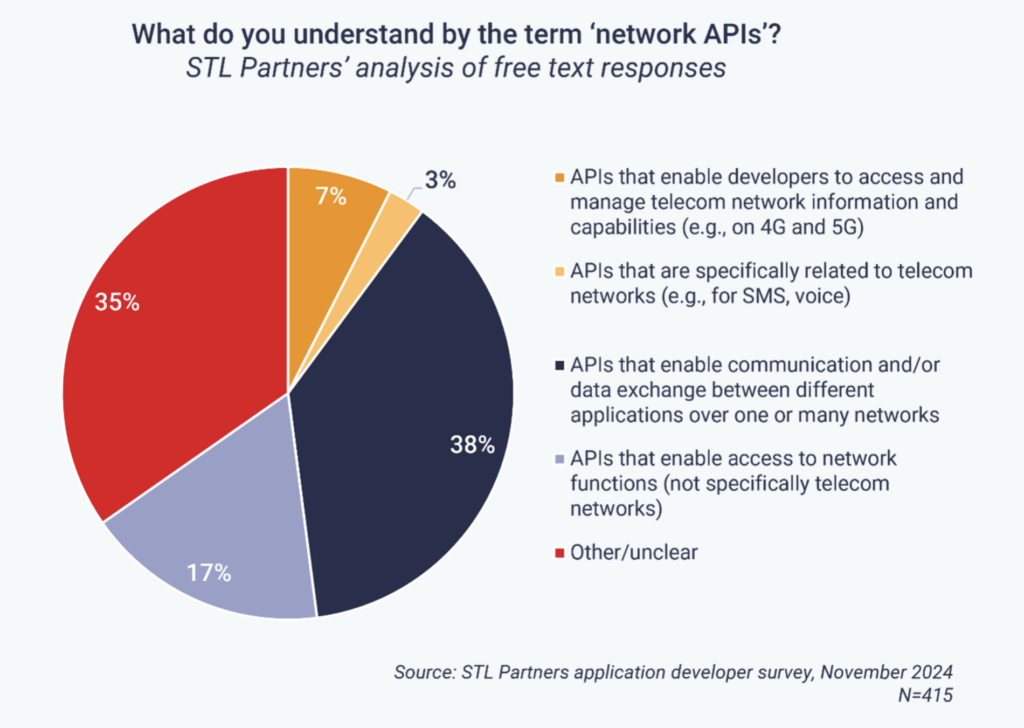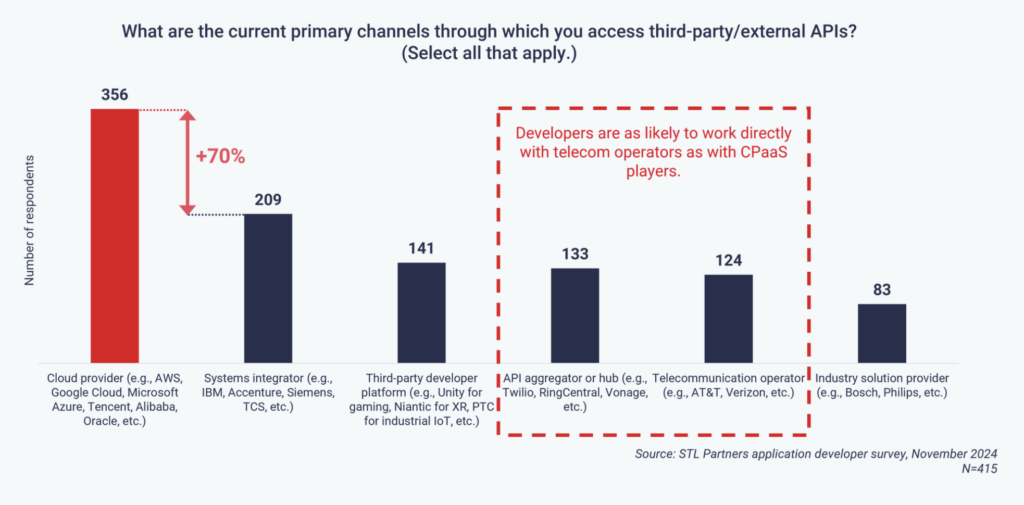Despite good work by industry groups, there remains a glaring lack of knowledge among software developers about application programming interfaces (APIs) for new 5G networks. A new survey by UK-based research group STL Partners claims 55 percent of software developers don’t associate the ‘network APIs’ with 5G networks. Instead, APIs are for management of wider IT, IoT, and cloud networks – so far as they are concerned.
The new poll – conducted in November, of 415 application developers in the US and the UK – says a lack of familiarity with cellular network APIs, and therefore with how to harness developing 5G capabilities in software applications, is a problem, but also an opportunity for network operators. “Telcos need to strike a fine balance between demonstrating new capabilities and delivering services in a way developers are already familiar with.”

Amy Cameron, research director at STL Partners, continued: “Operators should position their APIs as delivering similar functional capabilities to existing APIs – [such as the] ability to manage network functions, control access to resources and exchange data across different networks – but across a new networking domain that has previously been unavailable to them.” In other words, they should work harder to explain the value of 5G to their apps.
Because the developer community is interested, the report finds. Nearly half work on applications that would benefit from high-performing connectivity. A “majority” know of industry-driven API initiatives, such as GSMA Open Gateway and CAMARA. But they still tend to think network APIs are used mostly for data exchange and communication between applications running on different networks – and not for taking advantage of new-fangled 5G capabilities.
And more than half (54 percent) see the value of network APIs to access network performance information, such as latency and jitter – as proposed by the telecoms community for getting a read-out on 5G performance. Half of respondents see “understanding device status on the network” as “appealing”; 44 percent see the value to use 5G network APIs to specify and guarantee network performance levels for a period of time, the survey finds.
Developers have a “clear interest in the capabilities that telcos can offer to developers”, said STL Partners. But developers are used to working certain ways with APIs, “predominantly” through hyperscalers, such as Amazon Web Services (AWS), Microsoft Azure, and Google Cloud. STL Partners said: “This applies even to telecom APIs, with Microsoft claiming the top spot in terms of overall customer experience for developers.”

They “mostly want” to continue using APIs in the same way – whether on subscription or bundled. “Results show that to reach developers in their preferred channel, telcos must also work with systems integrators and develop their own direct channels, alongside the relationships they have already established with aggregator hubs,” said STL Partners.
Cameron said: “The telecom industry should ensure developers can access APIs in the channels they are already familiar with – starting with cloud platforms, and then through systems integrators and on telcos’ own platforms.“This approach should lower the barriers to adoption enough to expand telcos’ reach beyond developers focused on priority communication and into the wider enterprise productivity, IT and IoT developer market.”

